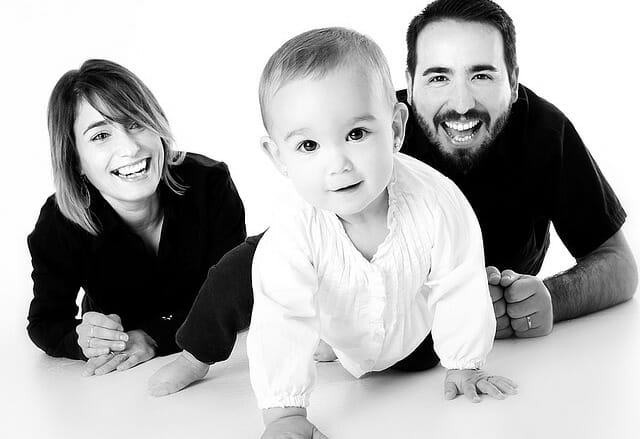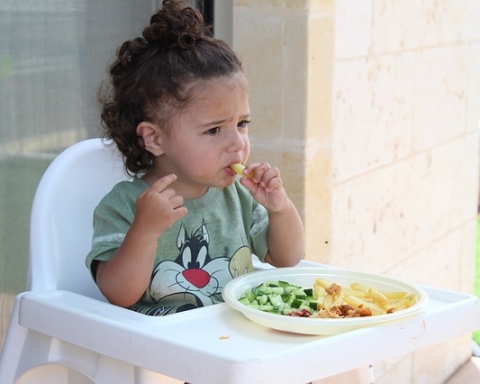Delayed speech and language development in toddlers is something that haunts many parents. Seeing their child struggling with words like “mama” and “dada” when other children of the same age are already chatterboxes causes many parents to panic and rush to pediatricians for help. But children learn at different paces. Although all children go through the same phases of development in terms of speech, walking, and learning, they seldom follow the same timeline.
Toddler Speech Development Chart
What determines whether a child’s language development is normal or not? Well, there is no clear-cut answer, but there are certain ranges that are considered normal. However, it’s okay if a child does not precisely fit the outlined time frame.
The American Speech-Language-Hearing Association (ASHA) has provided the following chart to track a child’s speech and language development:
| Hearing and Understanding | Talking |
Birth–3 Months
|
Birth–3 Months
|
4–6 Months
|
4–6 Months
|
7 Months–1 Year
|
7 Months–1 Year
|
Table: A chart to track a child’s speech and language development
Language Delay
Language delay is an inability in children to achieve language developmental milestones considered normal for their age. Some children overcome this delay over time and catch up with their peers when they start going to school.
However, some children have difficulty overcoming language delays and need professional assistance. Serious language delays are likely caused by an underlying condition, such as autism, autism spectrum disorder, attention-deficit hyperactivity disorder, or hearing problems. Early treatment of these conditions helps to prevent the development of other problems that could affect the child’s learning, emotions, and social skills.
Language Delay versus Language Disorder
A language disorder occurs when the child has problems processing linguistic information. It is exhibited in two ways:
- Expressive language disorder: Children have difficulty using words and sentences to express themselves.
- Receptive language disorder: Children have difficulty comprehending what is said to them. It is often accompanied by expressive language disorder.
Children with language disorders usually do not have any problem with the pronunciation of words. Rather, they struggle to put the right words and grammar together. Without specialist treatment, it is highly unlikely that they will catch up with their peers, and their communication problems may continue, leading to emotional and academic difficulties.
Toddler Speech Delay Exercises
It is best to leave the speech therapy to the experts, speech therapists, and speech-language pathologists (SLPs). Every child has his or her own special needs, and the experts know best how to provide them. But parents can’t just sit back and watch. They have to do their part too. Whether the child has a language delay or language disorder, these practices will encourage the child to speak:
- Talk to your child. Talk to your child a lot. Start talking to your child when he or she is born. Studies show that talking to children even before they are born is beneficial. Talk to your baby as you do your everyday chores. Tell them what you are doing as you do it. Use simple words and keep the sentences short. Using visual cues, such as extending your hand or pointing at objects, also helps the child understand what you are saying. For infants, baby talk always helps. Using a higher-than-normal pitch, swooping the pitch up and down, and using a somewhat musical form of speech helps infants pay more attention and helps them better understand what is said to them.
- Use two-way communication. Ask questions and allow your child to respond. It may take the child several seconds to answer, but be patient. Don’t be too quick to fill the silence.
- Read to your child. Read age-appropriate books to your child. Pick colorful books that are full of pictures. Talk about the colors and objects in the pictures. Encourage your child to say what he sees.
- Be patient. Remain patient and calm at all times. Sometimes you might feel frustrated about your child’s stumbling and stuttering, but it’s all a part of learning. Give your child time to accommodate to new words.
Seeking Help
Oftentimes, it is difficult to determine when to seek help. Postponing medical help in the hope that your child catch up or grow out of it may harm your child and leave him or her vulnerable to long-lasting language, emotional, and academic difficulties. It is best to keep a language development chart handy and to seek help as soon as you notice your child lagging behind, whether in hearing and understanding or talking.
References
- Whitehouse, Andrew J.O., Monique Robinson, and Stephen R. Zubrick. “Late Talking and the Risk for Psychosocial Problems during Childhood and Adolescence.” Pediatrics 128, no. 2 (2011): e324–e332. Retrieved from http://pediatrics.aappublications.org
- Ruan, Zeng-Liang, Li Liu, Esben Strodl, Li-Jun Fan, Xiao-Na Yin, Guo-Min Wen, Deng-Li Sun et al. “Antenatal Training with Music and Maternal Talk Concurrently May Reduce Autistic-Like Behaviors at around 3 Years of Age.” Frontiers in Psychiatry 8 (2017): 305. Retrieved from https://doi.org/10.3389/fpsyt.2017.00305
- Sharma, Mridula, Suzanne C. Purdy, and Andrea S. Kelly. “Comorbidity of Auditory Processing, Language, and Reading Disorders.” Journal of Speech, Language, and Hearing Research 52, no. 3 (2009): 706–722. Retrieved from https://bit.ly/3aJK6Tr
- “Birth to One Year.” American Speech-Language-Hearing Association (ASHA). Accessed August 22, 2018. https://www.asha.org/public/speech/.
- Fuller-Wright, Liz. “Uncovering the Sound of ‘Motherese,’ Baby Talk across Languages.” Princeton University. Oct 12, 2017. https://www.princeton.edu/news









